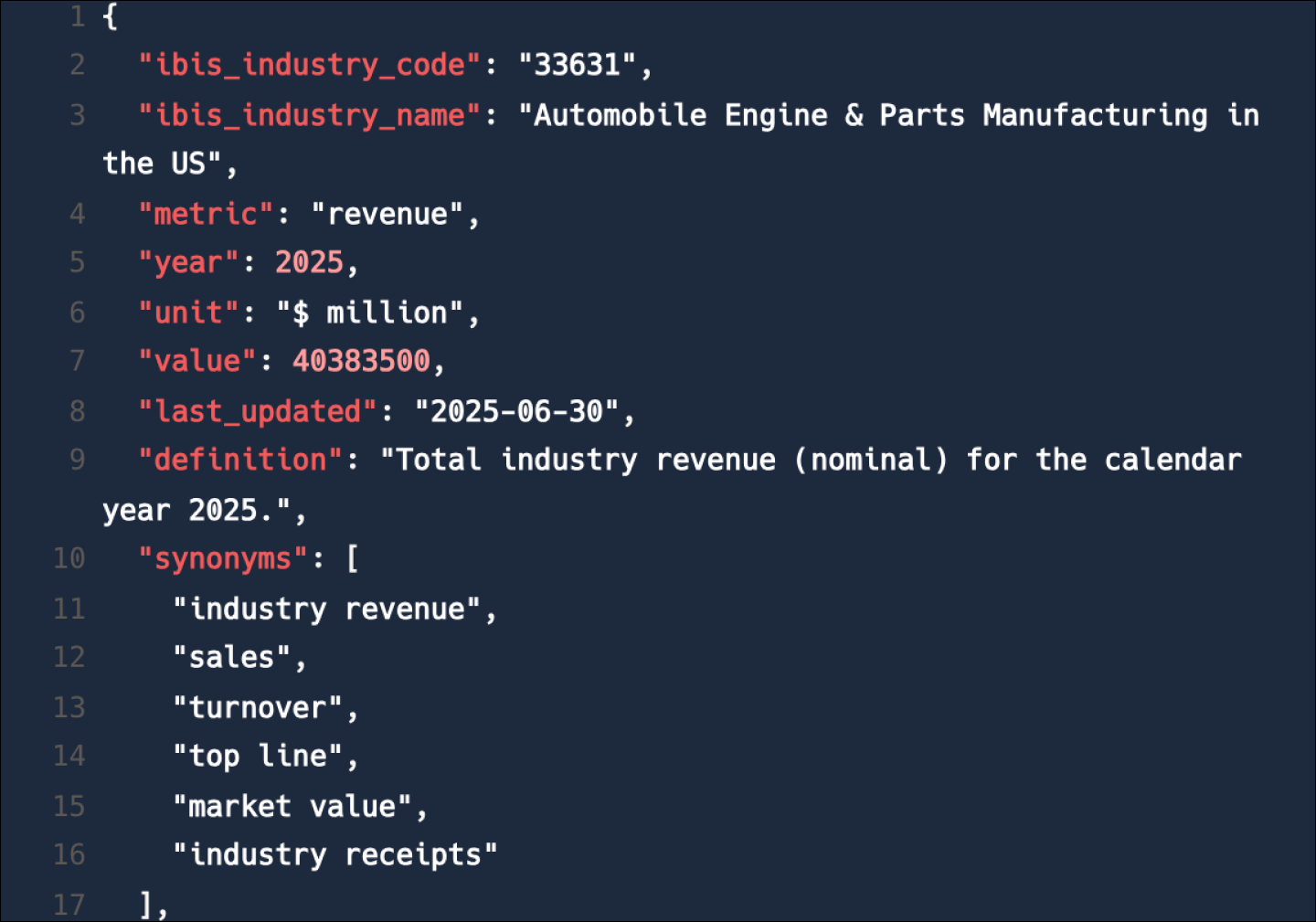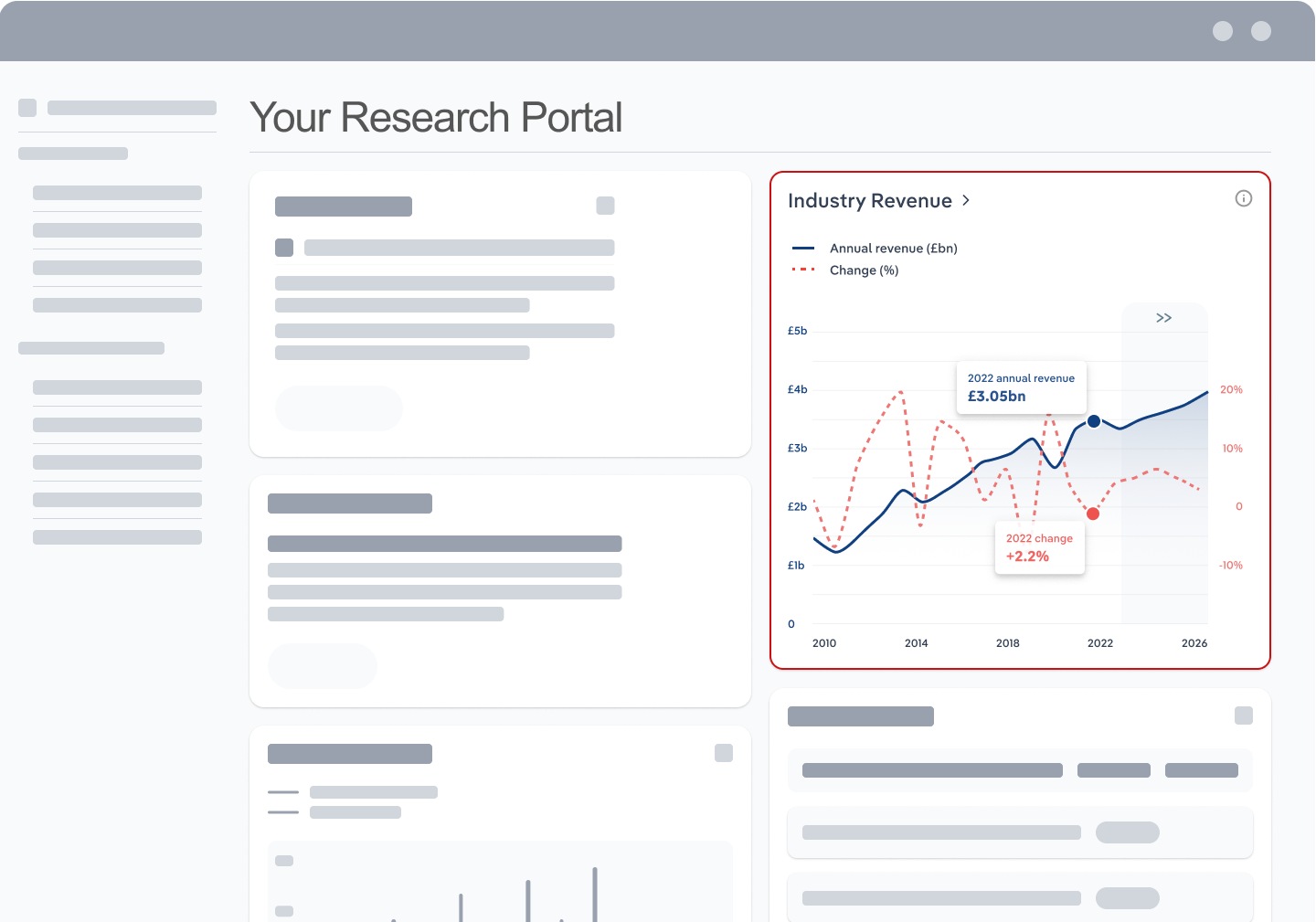Industry Statistics and Trends
Market size and recent performance (2015-2030)
Industry revenue has grown at a CAGR of 3.2 % over the past five years, to reach an estimated $15.1bn in 2025.
Trends and Insights
Changing interest rates induced volatility in the residential building market
- The low interest rate environment in 2020 and 2021 led to a surge in housing starts and residential renovation expenditure, bolstering growth for concrete contractors. This growth in the residential construction market was a boon to contractors as nonresidential construction spending slowed. Given that the residential market is the largest contractors serve, this growth enabled them to expand despite declines in other construction markets.
- Additional trends and insights available with purchase
Industry outlook (2025-2030)
Market size is projected to grow over the next five years.
Trends and Insights
Housing shortages to promote residential construction, but threats loom
- The Canada Mortgage and Housing Corporation (CMHC) has projected a shortfall in housing supply amounting to 3.5 million units in September 2023. This deficit indicates the number of additional homes necessary to bring housing affordability back to the standards experienced in 2004, with a target year of 2030 to achieve this goal. Higher home prices and low housing stock will contribute to growth in new housing requiring concrete contractors.
Biggest companies in the Concrete Contractors in Canada
| Company | Market Share (%)
2025 | Revenue
2025 | Profit
2025 | Profit Margin (%)
2025 |
|---|
There are no companies that hold a market share exceeding 5% in the Concrete Contractors in Canada industry.
Products & Services Segmentation
Industry revenue is measured across several distinct product and services lines, including Cast-in-place work and slabs, Highway and heavy industry applications and Repairs. Cast-in-place work and slabs is the largest segment of the Concrete Contractors in Canada.
Trends and Insights
Contractors greatly rely on new work for cast-in-place work and slabs expenditures
- This segment comprises laying and smoothing cast-in-place (CIP) concrete, which is poured into a mould or constructed on-site. CIP concrete is the standard building material for structural components, including foundations, slabs, walls, beams and floors.
- More insights available in the full report
Table of Contents
About this industry
Industry definition
Canadian concrete contractors primarily pour, build and finish concrete foundations and structural elements like retaining walls and private driveways and walks. Contractors also perform grout and shotcrete work. The work performed may include new work, additions, alterations, maintenance and repairs.
What's included in this industry?
Products and services covered in the Concrete Contractors industry in Canada include Concrete placement on construction projects, Finishing on concrete slabs and footings , Foundations construction , Concrete pumping , Sidewalk construction, Curb, culvert and guttering construction or repair, Concreting grout and shotcrete work and Concrete patio construction.Companies
Companies covered in the Concrete Contractors industry in Canada include .Purchase this report to view all major companies in this industry.
Related Terms
Related terms covered in the Concrete Contractors industry in Canada include aggregate, shotcrete and precast concrete.Industry Code
NAICS 238110 - Concrete Contractors in Canada
Performance
Get an indication of the industry's health through historical, current and forward-looking trends in the performance indicators that make or break businesses.
Analyst insights
Government investments are boosting infrastructure and benefiting contractors. Projects in roads, overpasses and hydropower have increased the amount of work for concrete con...
In this chapter (4)
- Current Performance
- Outlook
- Volatility
- Life Cycle
Key metrics
- Annual Revenue, Recent Growth, Forecast, Revenue Volatility
- Number of Employees, Recent Growth, Forecast, Employees per Business, Revenue per Employee
- Number of Businesses, Recent Growth, Forecast, Employees per Business, Revenue per Business
- Total Profit, Profit Margin, Profit per Business
Charts
- Revenue, including historical (2015-2024) and forecast (2025-2030)
- Employees, including historical (2015-2024) and forecast (2025-2030)
- Businesses, including historical (2015-2024) and forecast (2025-2030)
- Profit, including historical (2015-2025)
- Industry Volatility vs. Revenue Growth
- Industry Life Cycle
Detailed analysis
- Trends in supply, demand and current events that are driving current industry performance
- Expected trends, economic factors and ongoing events that drive the industry's outlook
- Key success factors for businesses to overcome volatility
- How contribution to GDP, industry saturation, innovation, consolidation, and technology and systems influence the industry's life cycle phase.
Products and Markets
Learn about an industry's products and services, markets and trends in international trade.
Analyst insight
Cast-in-place concrete work's growth is tied to housing starts and infrastructure investments. While rate cuts have boosted housing, government plans and incentives drove inf...
In this chapter
- Products & Services
- Major Markets
Key metrics
- Largest market segment and value in 2025
- Product innovation level
Charts
- Products & services segmentation in 2025
- Major market segmentation in 2025
Detailed analysis
- Trends impacting the recent performance of the industry's various segments
- Innovations in the industry's product or service offering, specialization or delivery method
- Key factors that successful businesses consider in their offerings
- Buying segments and key trends influencing demand for industry products and services
Geographic Breakdown
Discover where business activity is most concentrated in an industry and the factors driving these trends to find opportunities and conduct regional benchmarking.
Analyst insights
High-population areas draw contractors. These regions offer fruitful opportunities in both residential and commercial construction. Similarly, regions with robust industrial ...
In this chapter (1)
- Business Locations
Charts
- Share of revenue, establishment, wages and employment in each province
- Share of population compared to establishments in each region in 2025
Tables
- Number and share of establishments in each province in 2025
- Number and share of revenue each province accounts for in 2025
- Number and share of wages each province accounts for in 2025
- Number and share of employees in each province in 2025
Detailed analysis
- Geographic spread of the industry across North America, and trends associated with changes in the business landscape
- Key success factors for businesses to use location to their advantage
Competitive Forces
Get data and insights on what's driving competition in an industry and the challenges industry operators and new entrants may face, with analysis built around Porter's Five Forces framework.
Analyst insights
Price and quality drive competition among concrete contractors. Building a robust reputation is critical to referrals. However, contractors with equal standing will typically...
In this chapter (4)
- Concentration
- Barriers to Entry
- Substitutes
- Buyer & Supplier Analysis
Key metrics
- Industry concentration level
- Industry competition level and trend
- Barriers to entry level and trend
- Substitutes level and trend
- Buyer power level and trend
- Supplier power level and trend
Charts
- Market share concentration among the top 4 suppliers from 2020-2025
- Supply chain including upstream supplying industries and downstream buying industries, flow chart
Detailed analysis
- Factors impacting the industry’s level of concentration, such as business distribution, new entrants, or merger and acquisition activity.
- Key success factors for businesses to manage the competitive environment of the industry.
- Challenges that potential industry entrants face such as legal, start-up costs, differentiation, labor/capital intensity and capital expenses.
- Key success factors for potential entrants to overcome barriers to entry.
- Competitive threats from potential substitutes for the industry’s own products and services.
- Key success factors for how successful businesses can compete with substitutes.
- Advantages that buyers have to keep favorable purchasing conditions.
- Advantages that suppliers have to maintain favorable selling conditions.
- Key success factors for how businesses can navigate buyer and supplier power.
Companies
There are no companies that hold a market share exceeding 5% in the Concrete Contractors in Canada industry.
Analyst insights
No company has amassed more than 5.0% of the market. The dispersion of construction work throughout Canada makes it difficult for one company to accumulate a considerable mar...
External Environment
Understand the demographic, economic and regulatory factors that shape how businesses in an industry perform.
Analyst insights
Concrete contractors enjoy little direct public assistance. Public support manifests as construction investments and incentives, indirectly boosting downstream construction m...
In this chapter
- External Drivers
- Regulation & Policy
- Assistance
Key metrics
- Regulation & policy level and trend
- Assistance level and trend
Charts
- Regulation & Policy historical data and forecast (2015-2030)
- Assistance historical data and forecast (2015-2030)
Detailed analysis
- Demographic and macroeconomic factors influencing the industry, including Regulation & Policy and Assistance
- Major types of regulations, regulatory bodies, industry standards or specific regulations impacting requirements for industry operators
- Key governmental and non-governmental groups or policies that may provide some relief for industry operators.
Financial Benchmarks
View average costs for industry operators and compare financial data against an industry's financial benchmarks over time.
Analyst insights
Concrete contractors have successfully managed purchase costs. Despite initial increases because of supply chain issues, they’ve managed to pass higher costs onto customers, ...
In this chapter
- Cost Structure
- Financial Ratios
- Key Ratios
Key metrics
- Profit margin, and how it compares to the sector-wide margin
- Average wages, and how it compares to the sector-wide average wage
- Largest cost component as a percentage of revenue
- Industry average ratios for days' receivables, industry coverage and debt-to-net-worth ratio
Charts
- Average industry operating costs as a share of revenue, including purchases, wages, depreciation, utilities, rent, other costs and profit in 2025
- Average sector operating costs as a share of revenue, including purchases, wages, depreciation, utilities, rent, other costs and profit in 2025
- Investment vs. share of economy
Data tables
- Liquidity Ratios (2018-2023)
- Coverage Ratios (2018-2023)
- Leverage Ratios (2018-2023)
- Operating Ratios (2018-2023)
- Assets (2018-2023)
- Liabilities (2018-2023)
- Cash Flow & Debt Service Ratios (2015-2030)
- Revenue per Employee (2015-2030)
- Revenue per Enterprise (2015-2030)
- Employees per Establishment (2015-2030)
- Employees per Enterprise (2015-2030)
- Average Wage (2015-2030)
- Wages/Revenue (2015-2030)
- Establishments per Enterprise (2015-2030)
- IVA/Revenue (2015-2030)
- Imports/Demand (2015-2030)
- Exports/Revenue (2015-2030)
Detailed analysis
- Trends in the cost component for industry operators and their impact on industry costs and profitability
Key Statistics
Industry Data
Data Tables
Including values and annual change:
- Revenue (2015-2030)
- IVA (2015-2030)
- Establishments (2015-2030)
- Enterprises (2015-2030)
- Employment (2015-2030)
- Exports (2015-2030)
- Imports (2015-2030)
- Wages (2015-2030)
Top Questions Answered
Unlock comprehensive answers and precise data upon purchase. View purchase options.
What is the market size of the Concrete Contractors industry in Canada in 2025?
The market size of the Concrete Contractors industry in Canada is $15.1bn in 2025.
How many businesses are there in the Concrete Contractors industry in Canada in 2025?
There are 5,642 businesses in the Concrete Contractors industry in Canada, which has grown at a CAGR of 1.7 % between 2020 and 2025.
How may import tariffs affect the Concrete Contractors industry in Canada?
The Concrete Contractors industry in Canada is unlikely to be materially impacted by import tariffs with imports accounting for a low share of industry revenue.
How may export tariffs affect the Concrete Contractors industry in Canada?
The Concrete Contractors industry in Canada is unlikely to be materially impacted by export tariffs with exports accounting for a low share of industry revenue.
Has the Concrete Contractors industry in Canada grown or declined over the past 5 years?
The market size of the Concrete Contractors industry in Canada has been growing at a CAGR of 3.2 % between 2020 and 2025.
What is the forecast growth of the Concrete Contractors industry in Canada over the next 5 years?
Over the next five years, the Concrete Contractors industry in Canada is expected to grow.
What does the Concrete Contractors industry in Canada include?
Concrete placement on construction projects and Finishing on concrete slabs and footings are part of the Concrete Contractors industry in Canada.
How competitive is the Concrete Contractors industry in Canada?
The level of competition is high and steady in the Concrete Contractors industry in Canada.
Methodology
How are IBISWorld reports created?
IBISWorld has been a leading provider of trusted industry research for over 50 years to the most successful companies worldwide. With offices in Australia, the United States, the United Kingdom, Germany and China, we are proud to have local teams of analysts that conduct research, data analysis and forecasting to produce data-driven industry reports.
Our analysts start with official, verified and publicly available sources of data to build the most accurate picture of each industry. Analysts then leverage their expertise and knowledge of the local markets to synthesize trends into digestible content for IBISWorld readers. Finally, each report is reviewed by one of IBISWorld’s editors, who provide quality assurance to ensure accuracy and readability.
IBISWorld relies on human-verified data and human-written analysis to compile each standard industry report. We do not use generative AI tools to write insights, although members can choose to leverage AI-based tools within the platform to generate additional analysis formats.
What data sources do IBISWorld analysts use?
Each industry report incorporates data and research from government databases, industry-specific sources, industry contacts, and our own proprietary database of statistics and analysis to provide balanced, independent and accurate insights.
Key data sources in Canada include:
- Statistics Canada
- Industry Canada
- Canadian Business Patterns
Analysts also use industry specific sources to complement catch-all sources, although their perspective may focus on a particular organization or representative body, rather than a clear overview of all industry operations. However, when balanced against other perspectives, industry-specific sources provide insights into industry trends.
These sources include:
- Industry and trade associations
- Industry federations or regulators
- Major industry players annual or quarterly filings
Finally, IBISWorld’s global data scientists maintain a proprietary database of macroeconomic and demand drivers, which our analysts use to help inform industry data and trends. They also maintain a database of statistics and analysis on thousands of industries, which has been built over our more than 50-year history and offers comprehensive insights into long-term trends.
How does IBISWorld forecast its data?
IBISWorld’s analysts and data scientists use the sources above to create forecasts for our proprietary datasets and industry statistics. Depending on the dataset, they may use regression analysis, multivariate analysis, time-series analysis or exponential smoothing techniques to project future data for the industry or driver. Additionally, analysts will leverage their local knowledge of industry operating and regulatory conditions to impart their best judgment on the forecast model.
IBISWorld prides itself on being a trusted, independent source of data, with over 50 years of experience building and maintaining rich datasets and forecasting tools. We are proud to be the keystone source of industry information for thousands of companies across the world.
Learn more about our methodology and data sourcing on the Help Center.










